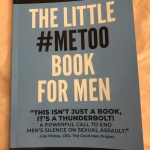I am so grateful to have had the opportunity to speak with award winning author, Elizabeth Bernstein, who writes the Bonds column for the Wall Street Journal.
She and I spoke, literally, for hours, about families and family therapy; she really captured the value of this approach to treatment.
Here’s the link to the full article.
For those without access to the WSJ, here’s a bit of the content. You can also try to find it on Google News.
What is family therapy?
It’s a kind of psychotherapy that is different from individual work, in which the therapist interacts with the patient from a pathology-based model. The family is seen as a system. To understand the individual, I don’t look at a patient and think about what is going wrong inside them; I think about what happened between them and the significant people in their life—their partner, siblings, parents, kids. To me, that is the genesis of so many of their problems.
One of the important characteristics of a system is the perpetual movement toward homeostasis. People like things being the same. The response to change can be a very powerful pushback. In a family there is constant tension because a life cycle is about change. And sometimes the system can’t tolerate it. Some of the changes are expected, such as birth, death, marriage and adolescence. But sometimes life hands us unexpected challenges—people can develop other health issues: psychiatric problems, mood disorders, chronic health problems, addiction.
Think of a family system as a bunch of people dancing together in a particular way. They have been doing this a long time, perhaps generations before they ever got to my office. I have to learn the dance steps of each family member. Then I coach them on new dance steps.
How does family therapy work?
There is no one way. Typically I want to see the parents first. I’ll draw a genogram, or family tree, going back several generations. I want to know who came to this country and when. That elicits stories, maybe of what happened during the war, or persecution or loss, or tragedy or resilience or courage. These begin to tell me some of the things that are important to them. And it helps me understand the context of what they grew up in and how it impacted how they parent.
I think people’s notion of family therapy is you just throw everybody in the room together. That’s not true. I bring in different constellations of the family—sometimes individuals, sometimes pairs, sometimes everyone together.
I say you should give family therapy at least nine months to a year. But I don’t believe in keeping people in therapy. I am pushing people to go out and live their lives and if there are problems to come back.
How do you know when a problem warrants therapy?
Often, whoever is suffering—the symptom bearer, the acting-out child or depressed adolescent—is targeted for treatment. They go to therapy. But sometimes it doesn’t work. When symptoms continue unabated despite other treatments, maybe the family system needs support. You can always come for a consultation, to see if it may work.
Has your therapy style changed over the years?
I have gotten much less attached to a particular theory and way of doing things. And I am much more collaborative with my families, to see them as experts in their own story. I am more interested in how they see it, as opposed to how I see it. I am really interested in getting people to be researchers into their own lives.
Can a person go to family therapy alone?
Absolutely. A lot of individual, family-oriented work is around coaching that person to change how they behave in difficult relationships with their family members. Because one person’s change does impact the system. Think of the mobile that hangs over a crib: When you touch one piece, it moves the entire mobile. Such is the case with a family system. Even happy events—going off to college, the birth of a child—can throw a system into a state of disequilibrium. And one person going to therapy and making changes in their role in the family is going to impact that system and effect change.
How can you get someone in the family to go if they refuse?
It is almost like the laws of physics: If you are pushing, you are giving someone the opportunity to resist. So I say invite the person and if they don’t come, tell them you are going anyway. This is very powerful, because it is threatening for that person to be left out. Imagine that shift in energy. I coach clients to say: “We really like working with this doctor and we are going back. And I don’t know what is going to happen but I think we are going to start changing.” The person who has been resisting will probably show up because he wants to know what is happening. And even if he doesn’t, this approach will effect change.
Do you share information from each family member with the others?
The question is not if we share but when and for what purpose. I tell young adults that everything you tell me is confidential unless you’re going to hurt yourself or someone else. But I am going to tell you when you need to talk to your parents. It’s really about selling the idea of family members having a conversation, not me sharing the information. I am the least important person in the room.
Do you take sides?
No, unless there is a case of interpersonal violence or emotional abuse. If someone is calling someone a name, I say you need to stop that, it is going to make things worse. But otherwise I practice multi-partiality—the capacity to see everybody’s point of view. I try to understand why people feel so strongly about something.
Do you give homework?
Yes, a lot. One assignment is letter writing. Sometimes I have them write letters for their own edification, sometimes the letters are meant to be shared.
Sometimes I will say: “Here is a great question. I want you to think about it. What will life be like when all of your kids are gone from the house?” Sometimes I ask them to do more research on their own. I might say: “Call up your mother and ask her what happened in the family in 1962. You got really symptomatic then.”
Has being a therapist affected your own family?
I erred on the side of caution. I had a lot of stories in my mind about what could go wrong, especially from a safety point of view. I think I also have high expectations around our capacity to have conversations, and feel connected to each other.
Are there certain dynamics that can’t typically be helped with family therapy?
Yes, when there is a significant amount of emotional abuse or interpersonal violence. People can’t speak freely with someone they are afraid of for fear of retaliation.
But, in general, I think most problems can be mastered, which is different than being solved. Mastered means you understand what this is and recognize it and can tolerate it. Not everything is resolvable. You can’t always change the circumstances. But you can master the situation.



